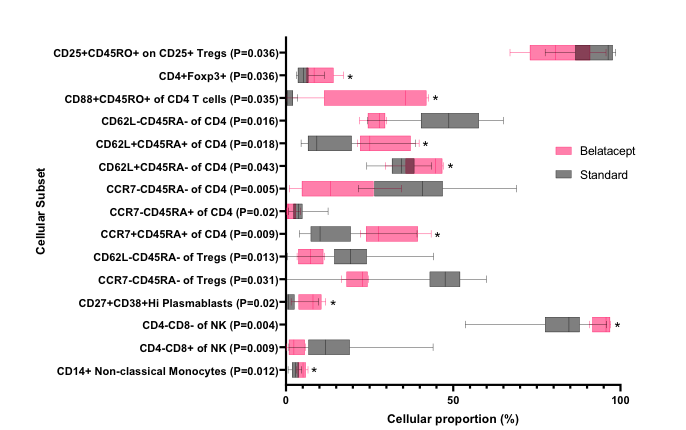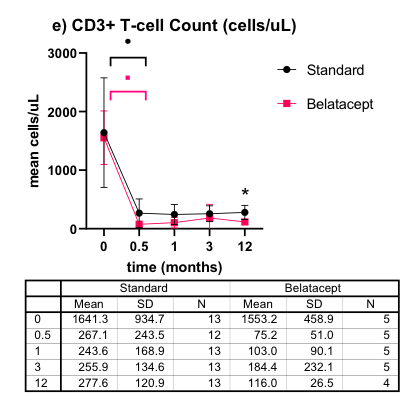
Belatacept and Sirolimus immunosuppression increases CD4+Foxp3+T-reg and central memory response in islet-transplantation
Hugh Gabor1,2, Min Hu1,2, Elvira Jiminez-Vera1, Jennifer Li1,2,3, Wayne Hawthorne1,2, Patricia Andersen3, Helen Thomas4,8, David Goodman5,7,8, Tom Loudovaris5, Kathy Howe5, Thomas McKay5,6,8, Natasha Rogers1,2,3, Philip O'Connell1,2,3.
1Centre for Transplant and Renal Research, Westmead Institute for Medical Research, Westmead, Australia; 2Faculty of Medicine and Health, University of Sydney, Sydney, Australia; 3Renal and Transplant Medicine, Westmead Hospital, Westmead, Australia; 4Immunology and Diabetes Unit, St. Vincent's Institute for Medical Research, Melbourne, Australia; 5Tom Mandel Islet Transplant Program, St. Vincent's Hospital, Melbourne, Australia; 6Immunology, St. Vincent's Institute for Medical Research, Melbourne, Australia; 7Nephrology, St. Vincents Hospital, Melbourne, Australia; 8Faculty of Medicine, Dentistry and Health, University of Melbourne, Melbourne, Australia
Aims: To understand the innate and adaptive immunophenotype associated with maintenance immunosuppression with Tacrolimus and Mycophenolate or Sirolimus and Belatacept in islet-cell transplantation. To identify cell subsets associated with graft rejection and long-term insulin independence.
Methods: Of 18 islet-transplant recipients, 5 were treated with Belatacept and sirolimus maintenance immunosuppression. Whole blood flow-cytometric immunophenotyping was performed using 45 cell markers at pre-transplantation (0-months), then 0.5-, 1-, 3- and 12-months post-transplantation. Mean cell proportions between drug groups were compared at each timepoint using Mann-Whitney U test, and against adult controls at 0-months. Non-parametric and regression analysis will be performed at 12-months comparing cell proportions against graft function according to the Igl’s criteria.
Results: Overall there was a significant decrease in CD3+T-cell count (p=0.007) at 12-months post-thymoglobulin induction. Eighteen cell proportions differed significantly between drug groups (Fig. 1). Absolute mean CD4:CD8 ratio was reduced in both groups and lower at all post-transplantation Belatacept timepoints. However, the CD4+Foxp3+T-regs (p=0.036) proportion was higher in the Belatacept group at 12-months, suggesting the agent spares this subset while deleting effectors. This effect was especially noticeable at 3-months where the absolute CD4+FOXP3+T-reg count was higher in the Belatacept group. Central-memory CD62L+CD45RA- and CD62L+CD45RA+ CD4+T-cells were increased, while CD62L-CD45RA-CD4+T-cells decreased, suggesting an upregulated central-memory response. This was consistent with an increased proportion of CCR7+ compared to CCR7- CD45RA+CD4+T-cells and an increased proportion of CCR7+central-memory CD25+Foxp3+T-regs.

Conclusion: Belatacept and Sirolimus use was associated with increased CD4+Foxp3+T-regs and an upregulation of the central memory response when comparted to Tacrolimus and Mycophenolate.

right-click to download
